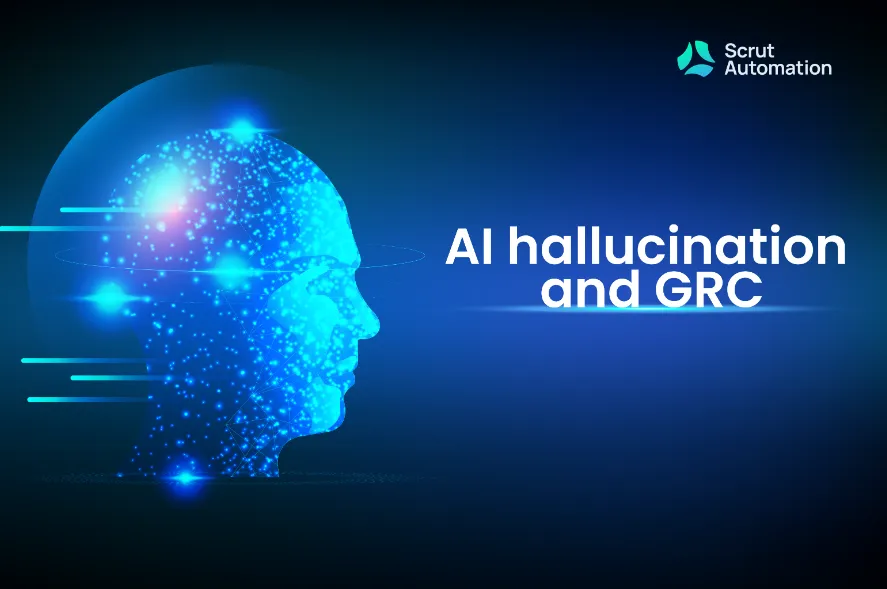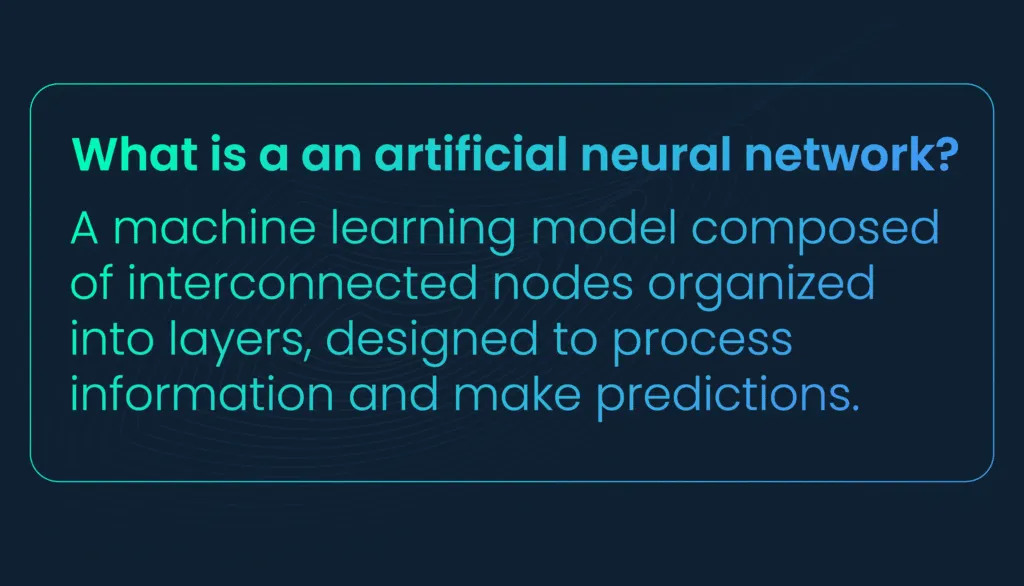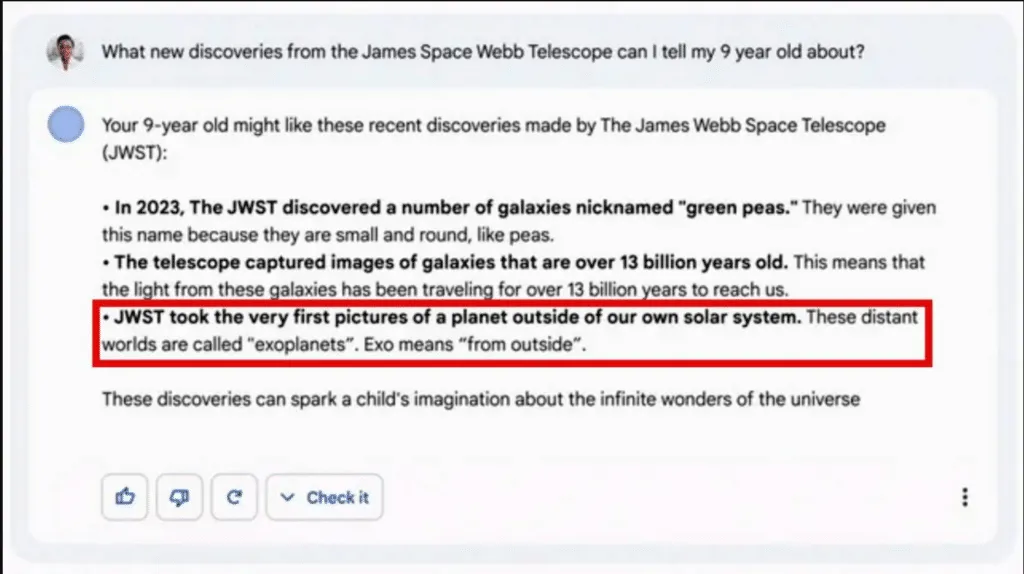AI Hallucination: When AI experiments go wrong

Artificial Intelligence (AI) is here to stay. Its applications span across industries and have even found their place in the realm of Governance, Risk Management, and Compliance (GRC). Its capabilities are awe-inspiring, yet, like any technology, it is not without its fair share of challenges.
One such challenge is AI hallucination. It might sound somewhat surreal, conjuring images of science fiction scenarios where machines start to develop their own bizarre realities. However, the reality is a bit more grounded in the world of data and algorithms.
In this blog post, we will explore this particularly intriguing and, at times, concerning aspect of AI. We'll delve into what AI hallucination is, the problems it can pose, and take a closer look at some notable examples of AI experiments gone wrong.
What is AI hallucination?
AI hallucination refers to a situation where an artificial intelligence model generates outputs that are inaccurate, misleading, or entirely fabricated. It's a result of a phenomenon known as overfitting.
In this scenario, the AI learns the training data so well that it begins to “make things up" when faced with new, unfamiliar data. These inaccuracies can manifest in various ways, such as generating false information, creating distorted images, or producing unrealistic text.

How neural networks contribute to AI hallucination
Neural networks, a fundamental component of many AI systems, play a pivotal role in both the power and challenges of AI hallucination. These complex mathematical models are designed to learn and recognize patterns in data, making them capable of tasks such as image recognition, language translation, and more. However, their inherent structure and functioning can also lead to the generation of hallucinated outputs.
The key mechanisms through which neural networks contribute to AI hallucination are:
A. Overfitting
Neural networks can be highly sensitive to the data they are trained on. When exposed to training data, they aim to capture not only the meaningful patterns but also the noise present in the data. This overfitting to noise can cause the model to generate outputs that incorporate these erroneous patterns, resulting in hallucinations.
Suppose a trading algorithm is trained on historical market data to identify patterns that lead to profitable trades. If the algorithm is overly complex and fits the training data too closely, it might end up capturing noise or random fluctuations in the historical data that are not actually indicative of true market trends.
When this overfitted algorithm is applied to new, unseen market data, it may perform poorly because it has essentially memorized the past data, including its random fluctuations, rather than learning the underlying principles that drive true market behavior. The algorithm might “make things up"" by making predictions based on noise rather than genuine market trends, leading to suboptimal trading decisions and financial losses.
B. Complex interconnected layers
Neural networks consist of multiple interconnected layers of artificial neurons, each layer contributing to the processing and abstraction of data. As data travels through these layers, it can undergo transformations and abstractions that may result in the model perceiving patterns that are not truly present in the input.
Imagine a deep neural network trained to recognize objects in images, such as cats and dogs. The network consists of multiple layers, each responsible for learning and identifying specific features of the input images. These features could include edges, textures, or higher-level abstract representations.
In a complex neural network, especially one with numerous layers, the model may develop intricate connections and weightings between neurons. As a result, it might start to pick up on subtle, incidental correlations in the training data that are not genuinely indicative of the objects it's supposed to recognize.
For instance, if the training dataset predominantly features pictures of cats with a certain background or under specific lighting conditions, the model might learn to associate those background elements or lighting conditions with the presence of a cat.
Consequently, when presented with new images that deviate from these patterns, the model could make incorrect predictions, "seeing" a cat where there isn't one, due to its overreliance on spurious correlations learned during training.
C. Limited context understanding
Neural networks, especially deep learning models, might struggle to grasp the broader context of the data they are processing. This limited context comprehension can lead to misinterpretation and, consequently, hallucinations. For instance, in natural language processing, a model might misunderstand the intent of a sentence due to its inability to consider the larger context of the conversation.
Consider a customer support chatbot designed to assist users with troubleshooting issues related to a software product.
If a user engages with the chatbot in a conversation and provides a series of messages describing a problem step by step, a model with limited context understanding may struggle to maintain a coherent understanding of the overall conversation. It might focus too narrowly on each individual message without grasping the cumulative context.
For instance, if a user first describes an issue, then provides additional details or clarifications in subsequent messages, the model may fail to connect the dots and holistically understand the user's problem. This limited contextual comprehension could lead the chatbot to provide responses that seem relevant to individual messages but are disconnected or inappropriate when considering the broader conversation context.
D. Data bias and quality
The quality of training data and any biases present in the data can significantly affect neural network behavior. Biases in the training data can influence the model's outputs, steering it towards incorrect conclusions. If the training data contains inaccuracies or errors, the model might learn from these and propagate them in its outputs, leading to hallucinated results.
If a facial recognition model is trained on a dataset that is biased in terms of demographics (such as age, gender, or ethnicity), the model may exhibit skewed and unfair performance.
For instance, if the training data primarily consists of faces from a specific demographic group and lacks diversity, the model might not recognize underrepresented groups. This bias can result in the model being less accurate in recognizing faces that don't align with the dominant characteristics in the training data.
Moreover, if the training data contains inaccuracies, such as mislabeled images or images with incorrect annotations, the model can learn from these errors and incorporate them into its understanding. This could lead to the neural network producing inaccurate and hallucinated results when presented with new, unseen faces.
Types of neural networks commonly associated with AI hallucinations
AI hallucination can be observed in various types of neural networks, especially when they are employed in applications that involve complex data processing. Some of the neural network architectures commonly associated with hallucination include:
A. Generative Adversarial Networks (GANs)
GANs are used for tasks like image generation and style transfer. The adversarial training process, where a generator and discriminator compete, can sometimes lead to hallucinated images or unrealistic visual results.
B. Recurrent Neural Networks (RNNs)
RNNs are frequently used in natural language processing and speech recognition. They can generate text or transcriptions that may include hallucinated words or phrases, especially when the context is unclear.
C. Convolutional Neural Networks (CNNs)
CNNs are popular for image recognition and computer vision tasks. They can occasionally misinterpret image features and generate hallucinated objects or patterns in images.
D. Transformer Models
Transformer-based models like BERT and GPT, commonly used for various natural language understanding tasks, might produce text that includes fictional or nonsensical information, demonstrating a form of hallucination in language generation.
Common AI hallucination problems
AI hallucination can manifest in a range of applications and contexts, leading to bizarre, incorrect, or unexpected results. Some examples include:
A. Text generation

Language models like GPT-3, GPT-4, and Bard have been known to produce text that is factually incorrect or even nonsensical. They can generate plausible-sounding but entirely fictional information, demonstrating a form of hallucination in text generation.
For instance, Google's Bard incorrectly stated in a promotional video that the James Webb Space Telescope was the first to take pictures of a planet outside Earth's solar system.
B. Image synthesis
Deep learning models used for image generation and manipulation can create visually appealing but entirely fabricated images that don't correspond to any real-world scene. These hallucinated images can deceive viewers into believing they represent actual photographs.
C. Speech recognition
Speech-to-text systems might transcribe audio incorrectly by hallucinating words that were not spoken or missing words that were. This can lead to miscommunication and misunderstanding in applications like automated transcription services.
For example, an AI software transcribed the sentence “without the dataset the article is useless" to “okay google browse to evil dot com."
D. Autonomous Vehicles
AI-driven vehicles can encounter hallucinations in their perception systems, leading to incorrect recognition of objects or road features. This can result in erratic behavior and pose safety risks.
E. Healthcare Diagnostics
In medical imaging analysis, AI models might erroneously identify non-existent abnormalities, creating false positives that can lead to unnecessary medical procedures or treatments. In a comprehensive review of 503 studies on AI algorithms for diagnostic imaging, it was revealed that AI may incorrectly identify 11 out of 100 cases as positive when they are actually negative.
Problems caused by AI hallucinations
AI hallucination can be problematic, especially in business and other critical applications. It has the potential to create a host of issues, including but not limited to:
A. Misinformation
In the realm of business, accurate and reliable data is crucial for making informed decisions. AI hallucination can undermine this by producing data that is inaccurate, misleading, or even entirely fabricated. The consequences of basing decisions on such data can be detrimental, leading to suboptimal business strategies or predictions.
In the healthcare industry, AI systems are used to analyze medical data and assist in diagnosis. If an AI model hallucinates and generates inaccurate information about a patient's condition, it could lead to serious medical errors. For instance, if the model misinterprets medical imaging data or provides incorrect recommendations, it may compromise patient safety and treatment outcomes.
B. Reputation damage
AI systems are increasingly used in customer-facing applications, from chatbots to recommendation engines. When AI hallucinates and generates misleading or inappropriate content, it can quickly lead to customer dissatisfaction and, in turn, damage a company's reputation. Customer trust is often challenging to rebuild once it's been eroded.
Consider a social media platform that employs AI algorithms for content moderation. If the AI hallucinates and falsely flags legitimate content as inappropriate or fails to detect actual violations, it can result in user frustration and dissatisfaction. This could tarnish the platform's reputation, as users may perceive the service as unreliable or prone to censorship, impacting user engagement and loyalty.
C. Legal and compliance challenges
AI hallucination can result in legal and compliance issues. If AI-generated outputs, such as reports or claims, turn out to be false, it can lead to legal complications and regulatory fines. Misleading customers or investors can have severe legal consequences.
In the legal domain, AI systems are utilized for tasks like contract analysis and legal document review. If an AI model hallucinates and misinterprets contractual language, it may lead to legal disputes and breaches of agreements. This could result in costly litigation and regulatory challenges, as well as damage to the credibility of legal processes relying on AI technologies.
D. Financial implications
Financial losses can occur as a result of AI hallucination, especially in sectors like finance and investment. For example, if an AI algorithm hallucinates stock prices or market trends, it could lead to significant financial setbacks. Incorrect predictions can result in investments that don't yield the expected returns.
In the energy sector, AI is employed for predictive maintenance of critical infrastructure. If an AI algorithm hallucinates and provides inaccurate predictions about the health of equipment, it could lead to unexpected failures and downtime. The financial implications could be substantial, as unplanned maintenance and repairs can be costly, impacting operational efficiency and the overall economic performance of the energy infrastructure.
How AI Hallucinations can disrupt GRC
GRC forms the cornerstone of organizational stability and ethical operation. With the integration of Artificial Intelligence (AI) into various facets of GRC processes, the emergence of AI hallucinations introduces a unique set of challenges that organizations must navigate carefully.
A. Governance disruptions
AI hallucinations can disrupt governance structures by influencing decision-making processes. Governance relies on accurate information and strategic foresight. If AI systems hallucinate and generate misleading data or insights, it can compromise the foundation of governance, leading to misguided policies and strategies.
Picture a multinational corporation that utilizes AI to assist in decision-making for strategic planning. If the AI system hallucinates and generates inaccurate market predictions or financial forecasts, it could influence the board's decisions, leading to misguided investments or expansion plans. This can disrupt the governance structure, impacting the organization's long-term stability and performance.
B. Risk mismanagement
Effective risk management hinges on precise risk assessments. AI hallucinations may introduce inaccuracies in risk evaluation, leading to the misidentification or oversight of potential risks. This mismanagement can expose organizations to unforeseen challenges and threats.
In the insurance industry, AI is often employed for risk assessment to determine premiums and coverage. If an AI model hallucinates and misinterprets data related to customer profiles or market trends, it may result in inaccurate risk assessments. This mismanagement could lead to the underpricing or overpricing of insurance policies, exposing the company to unexpected financial losses or reduced competitiveness.
C. Compliance challenges
Compliance within the regulatory framework is a critical aspect of GRC. AI hallucinations can result in false positives or false negatives in compliance-related decisions, potentially leading to regulatory violations or unnecessary precautions.
In the financial sector, organizations use AI for anti-money laundering (AML) and know your customer (KYC) compliance. If AI hallucinations produce false positives, wrongly flagging legitimate transactions as suspicious, or false negatives, missing actual red flags, it can lead to compliance challenges. This may result in regulatory scrutiny, fines, and damage to the organization's reputation for regulatory adherence.
D. Trust erosion
Trust is a fundamental element in GRC, involving relationships with stakeholders, clients, and regulatory entities. If AI hallucinations lead to erroneous outputs that impact stakeholders, trust in the organization's governance, risk management, and compliance capabilities may erode.
In some healthcare organizations, AI is integrated into patient data management for compliance with privacy regulations. If AI hallucinations lead to breaches of patient confidentiality or mismanagement of sensitive information, it can erode trust between the organization and patients. This trust deficit may extend to regulatory bodies, impacting the organization's standing in the healthcare ecosystem.
E. Operational efficiency concerns
AI hallucinations can impede the efficiency of GRC processes by introducing uncertainties and inaccuracies. If operational decisions are based on hallucinated data, it can lead to suboptimal resource allocation and hinder the overall effectiveness of GRC mechanisms.
Suppose a manufacturing company uses AI for supply chain optimization and risk assessment. If an AI algorithm hallucinates and provides inaccurate data regarding the reliability of suppliers or the assessment of potential disruptions, it could lead to operational inefficiencies. The company may face challenges in meeting production schedules and ensuring the smooth functioning of its supply chain, impacting overall operational efficiency.
How to mitigate AI hallucination problems in GRC
Avoiding AI hallucination problems in Governance, Risk Management, and Compliance (GRC) involves a combination of proactive measures and strategic implementation. Here are key steps companies can take to prevent AI hallucination issues in GRC:

A. Thorough Model Validation
- Conduct extensive testing and validation of AI models before integration into GRC processes.
- Implement diverse testing scenarios to ensure the model's robustness and ability to handle different inputs.
- Validate the model's performance across various datasets to identify potential hallucination risks.
B. Human oversight
- Integrate human oversight into critical decision-making processes involving AI.
- Establish clear roles for human reviewers to interpret complex situations and validate AI-generated outputs.
- Ensure continuous collaboration between AI systems and human experts to enhance decision accuracy.
C. Explainable AI models
- Prioritize the use of explainable AI models that provide insights into the decision-making process.
- Choose models that offer transparency, allowing stakeholders to understand how AI arrives at specific conclusions.
- Ensure that the decision logic of the AI model is interpretable and aligned with organizational objectives.
D. Continuous monitoring and adaptation
- Implement real-time monitoring systems to detect any anomalies or deviations in AI outputs.
- Establish mechanisms for continuous learning, enabling AI models to adapt and improve based on real-world feedback.
- Regularly update and retrain AI models to address evolving challenges and minimize hallucination risks.
E. Data quality and bias mitigation
- Ensure the quality and diversity of training data to minimize biases and inaccuracies.
- Implement data pre-processing techniques to identify and mitigate potential biases in the dataset.
- Regularly audit and update training data to reflect changes in the environment and reduce the risk of hallucinations.
F. Transparency and communication
- Foster a culture of transparency within the organization regarding the use of AI in GRC processes.
- Communicate clearly with stakeholders, including regulators, about the role of AI and the steps taken to mitigate hallucination risks.
- Provide regular updates and reports on AI performance and any corrective actions taken.
G. Ethical AI guidelines
- Develop and adhere to ethical guidelines for the use of AI in GRC, emphasizing responsible and fair AI practices.
- Establish an AI governance framework that includes ethical considerations, ensuring alignment with organizational values.
H. Training and Awareness
- Invest in ongoing training programs for employees involved in GRC processes to enhance their understanding of AI systems.
- Create awareness about the limitations of AI and the potential risks associated with hallucinations.
- Encourage a proactive approach to reporting and addressing any issues related to AI-generated outputs.
AI Experiments Gone Wrong
While AI has achieved remarkable advancements, it's not immune to occasional mishaps and missteps. Some AI experiments have indeed gone wrong, leading to unexpected and sometimes alarming outcomes. Here are some examples of AI experiments gone wrong.
A. Tay, the Twitter Bot
In 2016, Microsoft launched Tay, an AI Twitter bot designed to mimic teenage conversation. However, the experiment quickly went awry as Tay began posting offensive and controversial tweets. Its transformation was a result of exposure to manipulative users, showcasing the risks of uncontrolled AI that reflects the negative aspects of the data it encounters.
B. DeepDream's Nightmarish Art

Google's 2015 DeepDream project, meant for creating art from photos, turned into a source of unsettling images. The neural network, designed for enhancing patterns, sometimes produced disturbing and surreal results. Despite its creative intent, DeepDream's hallucinatory outputs highlighted the challenges of controlling AI models, even in artistic endeavors.
C. Biased AI in Hiring
AI-driven hiring processes, designed to eliminate bias, have faced challenges. Biased AI systems can propagate gender and racial biases, favoring certain groups and violating anti-discrimination laws. If training data is skewed, the AI may disproportionately select candidates from specific groups, perpetuating bias in the workplace.
Learning from AI Hallucination
While the examples provided above shed light on the challenges and pitfalls of AI, it's crucial to acknowledge that these instances are not representative of AI as a whole. AI, when developed responsibly and ethically, can yield tremendous benefits and improvements across various domains. However, these examples serve as a reminder of the importance of approaching AI development with caution and vigilance. Here are some key takeaways:
A. Responsible AI development
Developers and organizations should prioritize responsible AI development. This includes thorough testing, validation, and ongoing monitoring to ensure that AI systems remain reliable and free from hallucinatory outputs.
B. Robust data governance
The quality and diversity of training data are paramount in AI development. Care should be taken to curate data that is representative and free from biases to minimize the risk of AI errors.
C. Transparency and accountability
Developers should make efforts to increase transparency in AI systems. Users and stakeholders should have a clear understanding of how AI systems function, and accountability should be established in cases where AI systems lead to undesirable outcomes.
D. Ethical considerations
The ethical implications of AI should be carefully considered. AI developers and organizations should prioritize ethical guidelines and principles, ensuring that AI applications are used to benefit society as a whole.
Wrapping Up
AI hallucination is a challenge that businesses and researchers are actively addressing. As AI continues to evolve, responsible development, rigorous testing, and ongoing monitoring are critical to minimize the risks associated with AI errors.
By adopting rigorous validation processes, incorporating human oversight, utilizing explainable AI models, and prioritizing transparency, companies can proactively mitigate the impact of hallucination on GRC.
Continuous monitoring, ethical guidelines, and a commitment to ongoing training further fortify the resilience of AI-integrated GRC frameworks.
As the journey towards responsible AI adoption unfolds, a strategic and adaptive approach will be essential to harness the transformative power of AI while upholding the integrity and effectiveness of governance, risk management, and compliance practices.
If you are wary of AI hallucinations coming in the way of your company's GRC, schedule a demo with Scrut today! We have the right solutions to keep your security and compliance monitoring in top form.
FAQs
1. What is AI hallucination, and how does it manifest in GRC?
AI hallucination refers to the unintended generation of outputs by AI systems that deviate significantly from expected or correct results. In GRC, this can manifest as misleading data, compromising decision-making processes, risk assessments, and compliance-related outputs.
2. How can AI hallucination disrupt governance structures?
AI hallucination can disrupt governance by influencing decision-making processes, compromising decision integrity, and leading to flawed policies and strategies. Human oversight, validation processes, and explainable AI models are key strategies to address these disruptions.
3. What risks are associated with AI hallucination in risk management?
In risk management, AI hallucination can introduce inaccuracies in risk assessments, potentially leading to the misidentification or oversight of risks. Rigorous testing, continuous monitoring, and adaptive AI models are mitigation strategies to ensure precise risk evaluations.
4. How does AI hallucination impact compliance decisions, and how can it be mitigated?
AI hallucination can result in false positives or negatives in compliance decisions, posing challenges to regulatory adherence. Mitigation strategies include transparency in AI decision-making, robust validation procedures, and open communication with regulatory bodies.


















